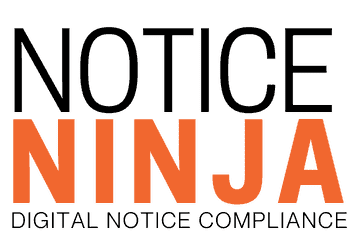Yes, NOTICENINJA is corporate tax notice compliance software that automates key workflows including notice assignments. The platform employs a rule-based system that can manage multiple level rules and ensure notices are directed to the appropriate stakeholder. As a result, you’ll never have to worry about notices being misdirected or slipping between the cracks.
.png)
Notice Compliance Best Practices: A 10 Step Guide
.png?width=1000&name=2024%20blog%20%20(2).png)
06 March
Navigating the intricate world of compliance notices requires a strategic approach that combines industry expertise, technology, and streamlined processes. In this section, we will present a comprehensive guide outlining best practices for managing compliance notices effectively. Whether you're new to compliance management or seeking to enhance your existing practices, these steps will serve as a roadmap to compliance excellence.
Step 1: Establish a Centralized Notice Repository
- Best Practice: Create a centralized repository to store all compliance notices. This digital hub should be easily accessible to all relevant stakeholders.
- Benefits: Centralization ensures transparency, simplifies notice tracking, and fosters collaboration among teams.
Step 2: Leverage OCR Scan to Capture Technology
- Best Practice: Embrace Optical Character Recognition (OCR) scan to capture technology to automate data extraction from notices.
- Benefits: OCR technology reduces manual data entry, minimizes errors, and accelerates notice processing.
Step 3: Implement Intuitive Workflows
- Best Practice: Develop workflows tailored to tax and agency notices, informed by industry expertise.
- Benefits: Intuitive workflows enhance efficiency, guide users through compliance tasks, and reduce the learning curve for new users.
Step 4: Establish Compliance Task Assignments
- Best Practice: Clearly define roles and responsibilities for compliance tasks, ensuring that deadlines and activities are assigned to responsible individuals or teams.
- Benefits: Assignments prevent tasks from falling through the cracks and provide accountability.
Step 5: Prioritize Notices Based on Risk
- Best Practice: Categorize notices by risk level and prioritize actions accordingly.
- Benefits: Prioritization ensures that critical notices receive prompt attention, reducing
compliance-related risks.
Step 6: Monitor Compliance Deadlines Actively
- Best Practice: Utilize automated deadline tracking tools to stay informed about upcoming compliance deadlines.
- Benefits: Proactive monitoring prevents missed deadlines, eliminating penalties and fines.
Step 7: Real-time Updates and Alerts
- Best Practice: Subscribe to real-time updates and alerts for regulatory changes and compliance status.
- Benefits: Staying informed allows for rapid adaptation to evolving regulations, minimizing compliance risks.
Step 8: Implement Collaboration Tools
- Best Practice: Employ collaboration tools and platforms to facilitate communication and document sharing among team members.
- Benefits: Collaboration tools enhance team communication and document sharing, reducing the risk of miscommunication.
Step 9: Regular Audits and Reviews
- Best Practice: Conduct regular audits and reviews of compliance processes and records to identify areas for improvement.
- Benefits: Audits identify inefficiencies and provide opportunities for process optimization.
Step 10: Employee Training and Education
- Best Practice: Invest in employee training and education to ensure that all team members are well-versed in compliance processes and tools.
- Benefits: Well-trained employees make fewer errors, boost productivity, and contribute to a culture of compliance.
By following these step-by-step best practices, organizations can build a robust foundation for effective notice compliance management. From centralization and automation to proactive monitoring and collaboration, these practices empower organizations to navigate the complexities of compliance notices with confidence and precision.
